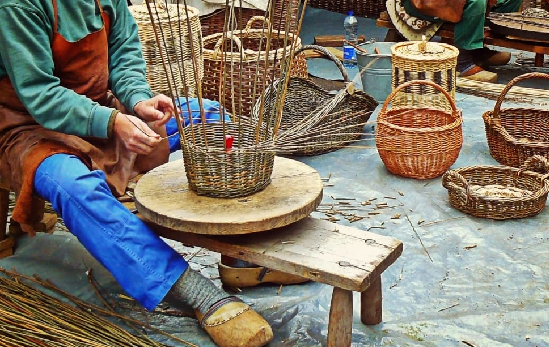
Traditional crafts prove heritage is part of the creative sector, the report says
Heritage key to creative industries’ success, report claims
The Heritage Alliance is calling for greater recognition and funding to support the historic places and objects that underpin creative and cultural activities, challenging the stereotype of heritage as “a decorative incidental backdrop to contemporary creative work”.
A lack of communication, collaboration and “explicit recognition” of the importance of heritage to the creative industries’ success is limiting the sector’s potential, new research suggests.
The report from the Heritage Alliance advocates for greater funding for skills training in heritage professions, and seeks to draw a link between the “undisputed” economic success of the creative industries and the “essential role” heritage plays in that success: “we are great custodians who don’t constantly ask for ever increasing subsidies.”
“Creative projects help heritage staff learn new skills and build capacity for partnerships, with creative practitioners serving as foundation partners for commercial projects and funding bids. Harnessed well, this match could greatly benefit both industries into the future.”
Heritage Alliance Chair Peter Ainsworth said there is a lack of recognition of those industries’ relationship with “places associated with the idea of heritage”, from historic shooting locations for film and television, to music venues and arts centres taking up residence in listed buildings, or video games that draw “inspiration from heritage and history”.
“Historic places or objects are not just a decorative incidental backdrop to contemporary creative work; in each case they are integral to the whole enterprise.”
Communication problems
The report says that “heritage can be perceived as elitist and not commercial or business-savvy” by creative practitioners, and “associated exclusively with old stuff” by many people.
“The heritage sector needs to find the right avenues and opportunities to market itself better as a creative industry in its own right. Many heritage professionals (like conservators, traditional crafts experts, architects and even re-enactors) do not just support creative practice, their work is founded on artistic skill and creativity.”
Despite frequently being listed with the creative industries, “heritage is often not seen as an equal partner of the creative industries”, the report says, and there is limited capacity and funding within the sector to produce evaluation reports that demonstrate the “full impact” of creative heritage projects. The two sectors were described as “speaking different languages”.
“Establishing practices to engage creative industries and heritage organisations in the same place is vital, in order to strengthen their common working practices, and learn how to add value and understand each partner’s wants, needs and limitations.”
The report also highlighted the challenge of communicating with diverse communities, who heritage and creative practitioners feel “fail to connect with the themes and stories” they present. Collaborations on small scale projects could “help the public identify and find a sense of place” with local heritage, it suggests.
Lack of ‘explicit recognition’
Workshops, best practice guidelines, a database for specialist heritage knowledge, and specialist roles to broker relationships between the heritage and creative sectors should be used to improve collaboration, the report recommends.
It acknowledges that the dearth of skills, knowledge and capacity in the heritage sector for delivering creative industries-related projects can be “comprehensively improved by effective brokering and through connecting organisations in the same room to create models for working together”.
But this has been hampered by “a lack of explicit recognition” by policy makers about heritage’s role in the creative economy: “The fact that [these sectors] sit together within the Department for Digital, Culture, Media and Sport should be an opportunity that can be truly harnessed and not hindered by Ministerial or sectoral portfolio divisions.
Most publicly accessed heritage is in the hands of private owners whose ability to apply for grants like Lottery funding is limited. They can also struggle to create partnerships and attract match funding, which some funders require.
“We cannot forget the assets which underpin our creative success. Heritage is a public good. The majority is cared for by private owners – from buildings to vintage vehicles. The private, independent, public and charity sectors must work together for it to survive and thrive.”
The Heritage Alliance is calling for wider policy changes to support the sector, including improvements to rural broadband infrastructure, public transport, and placing heritage professions on the UK skills shortage list.
Join the Discussion
You must be logged in to post a comment.